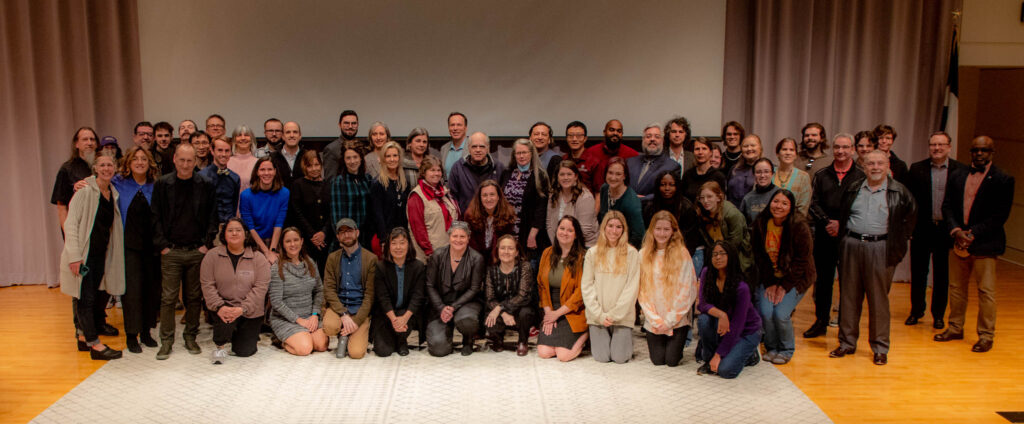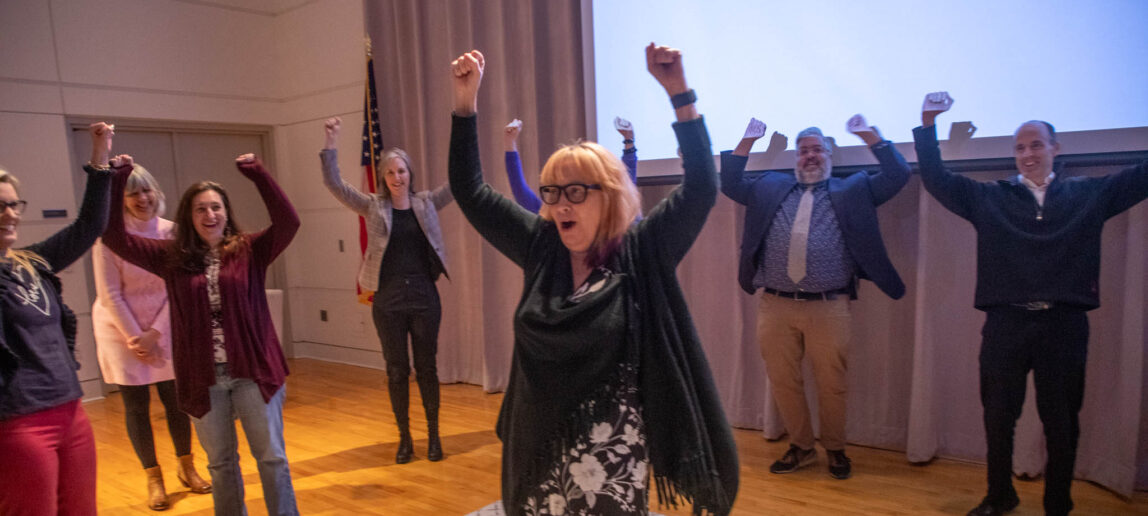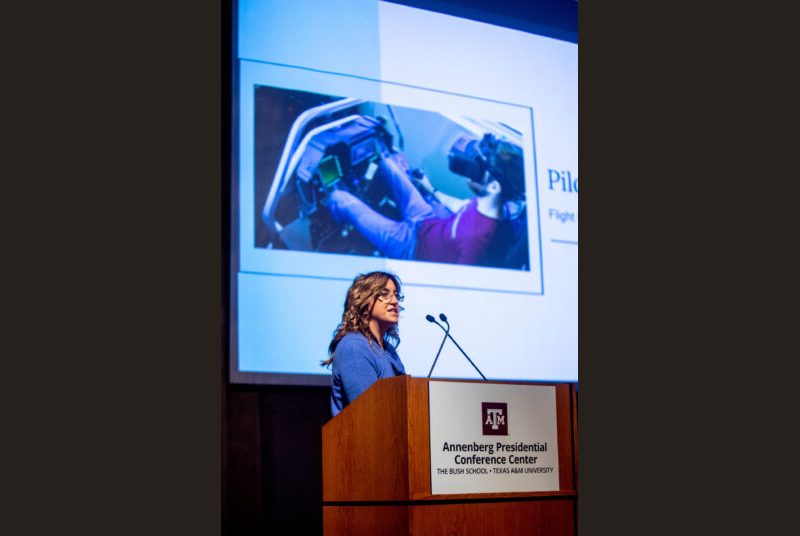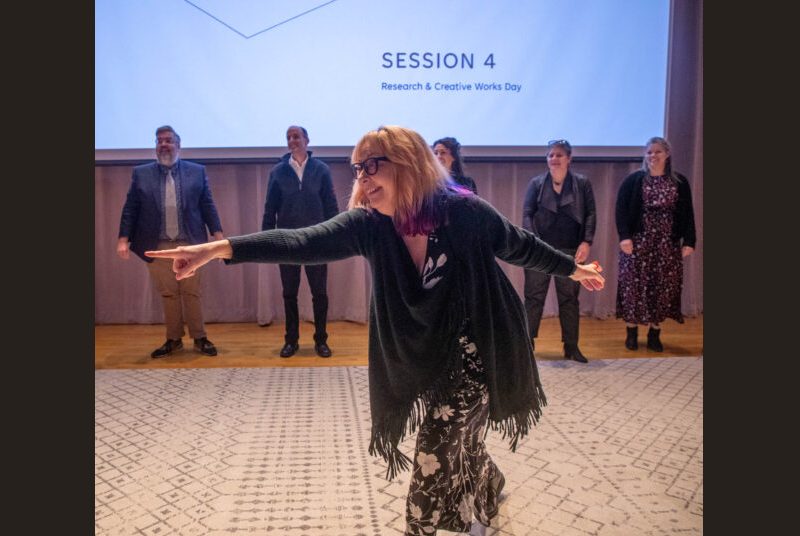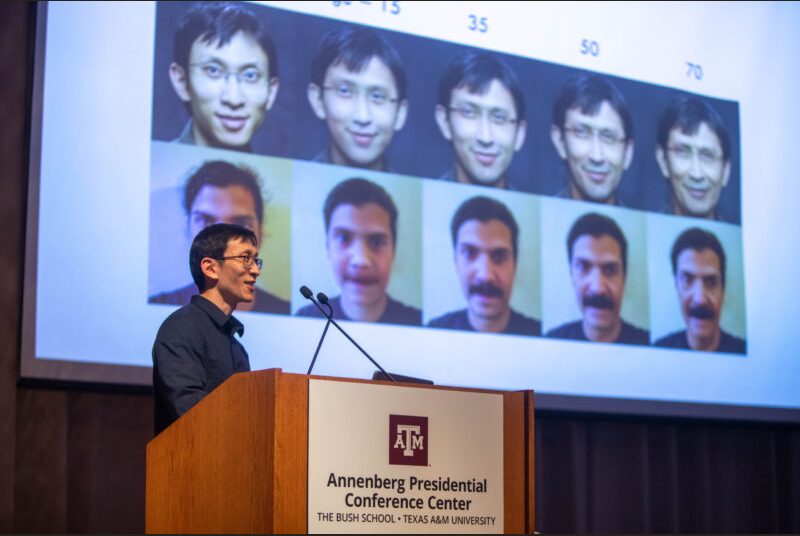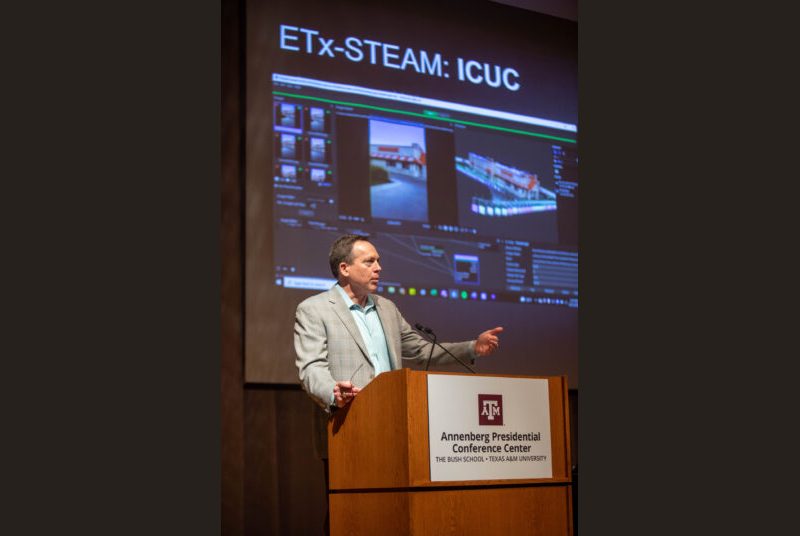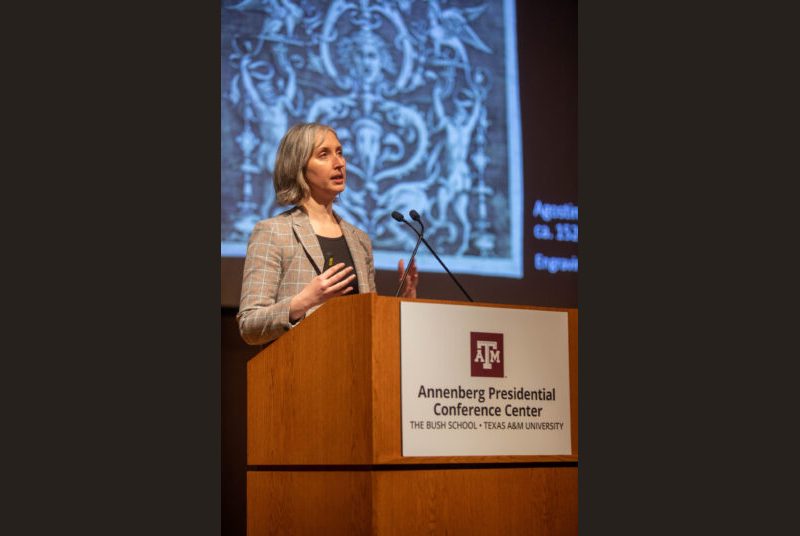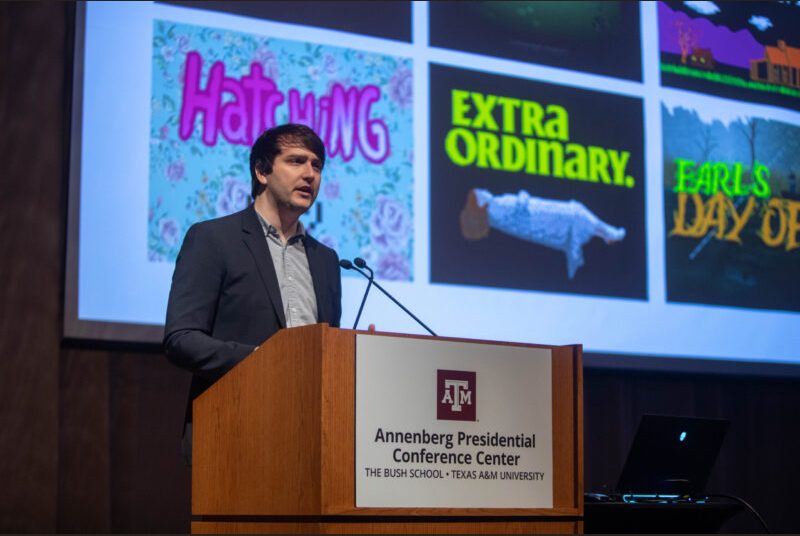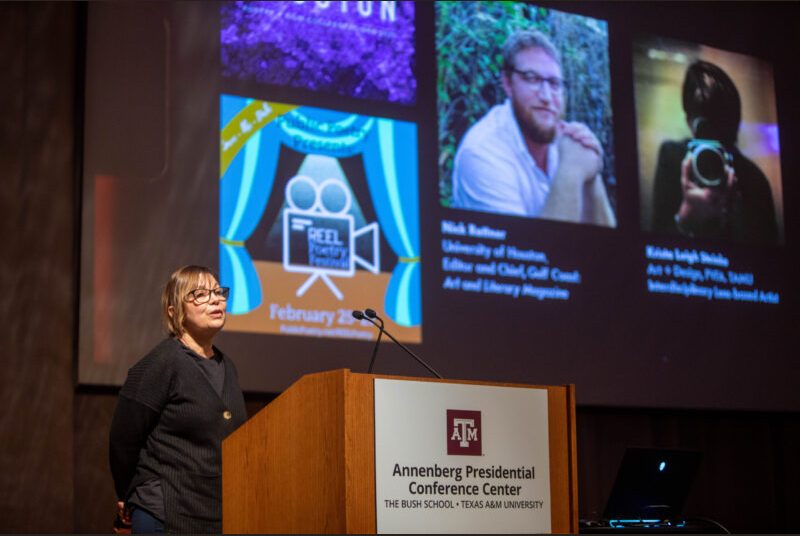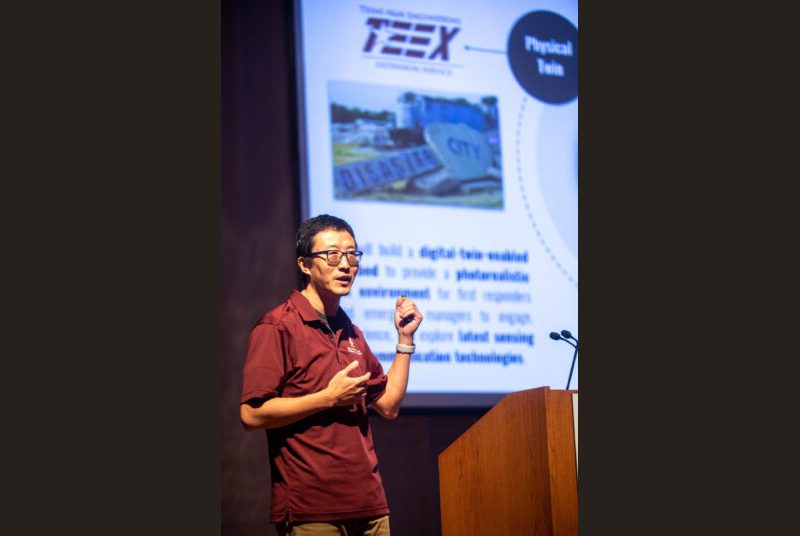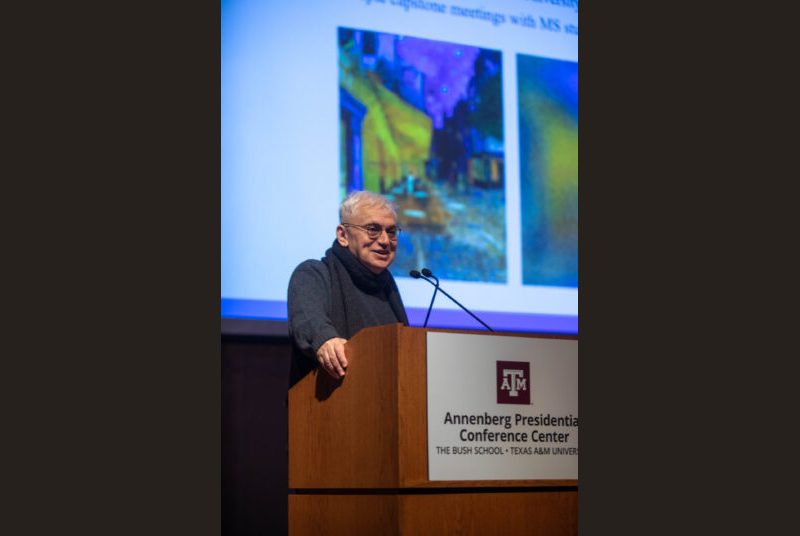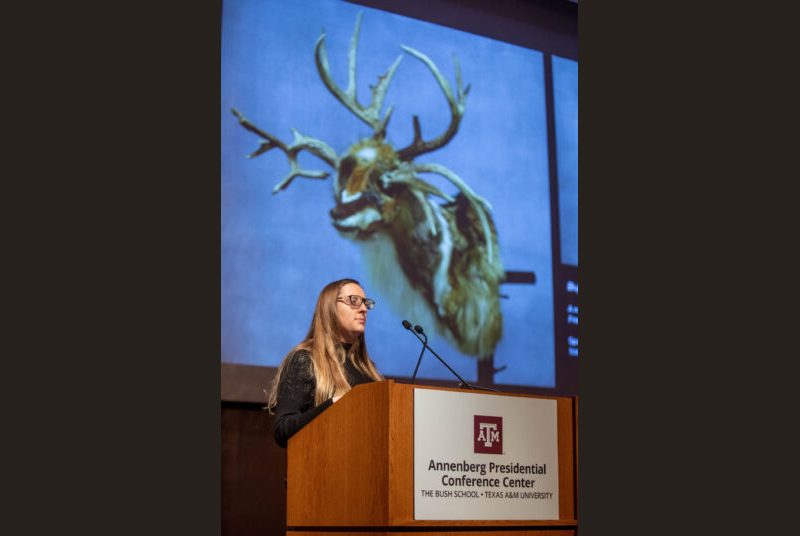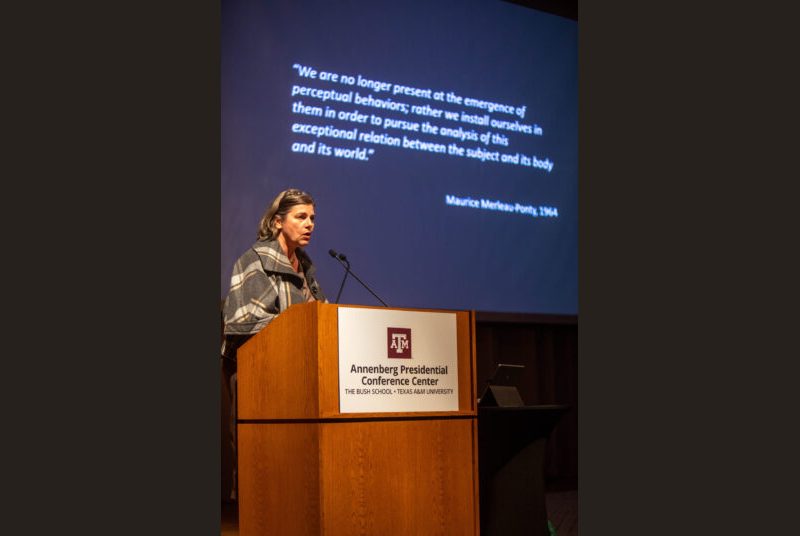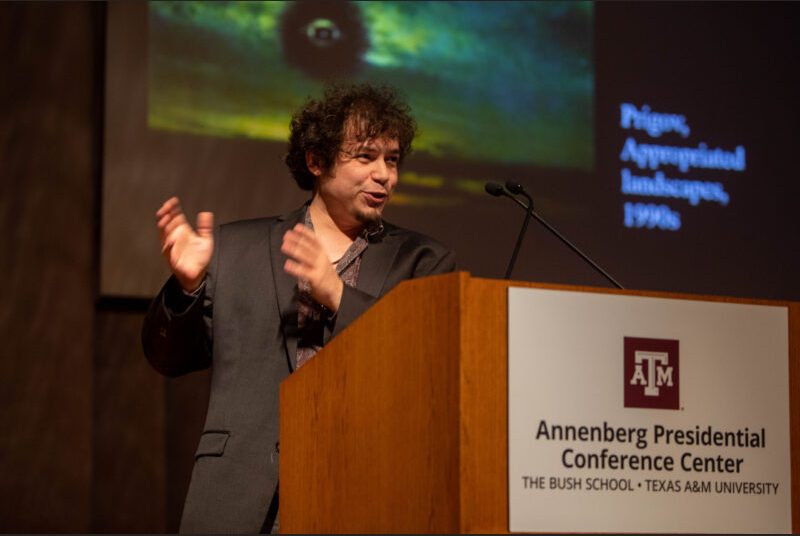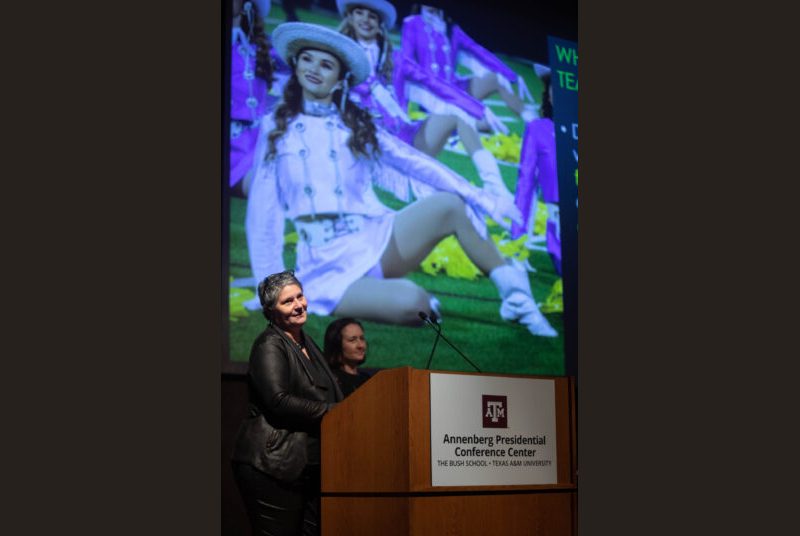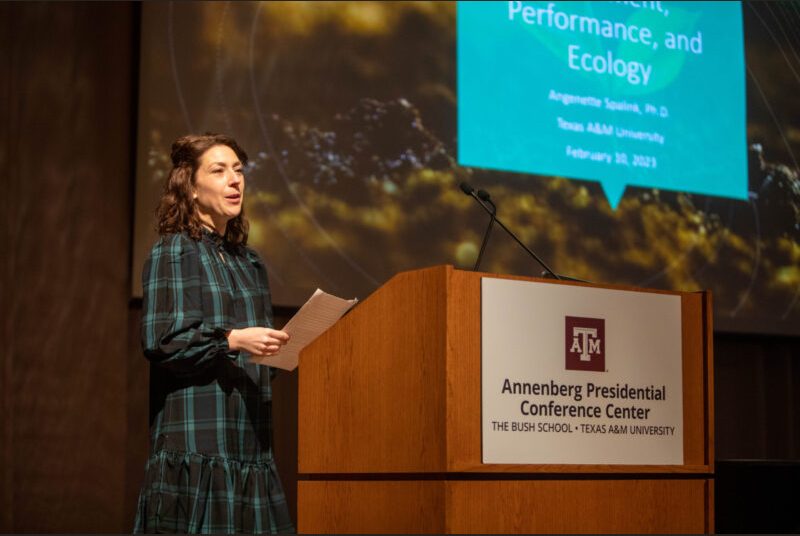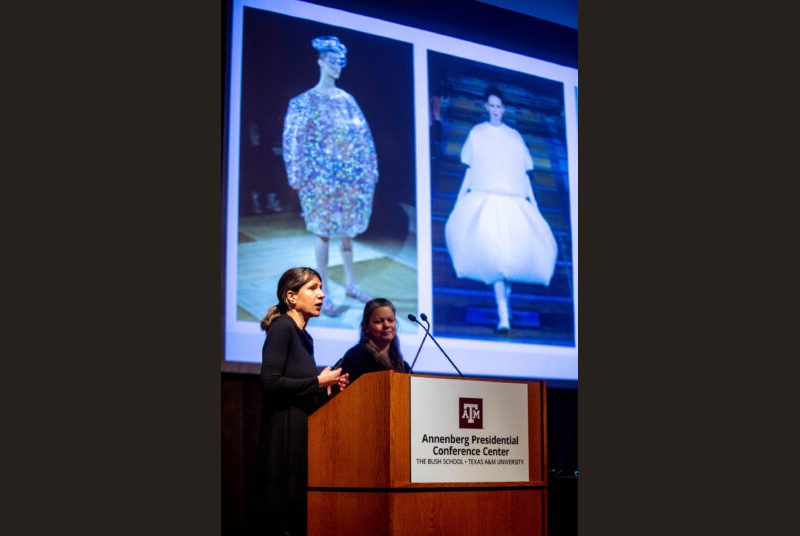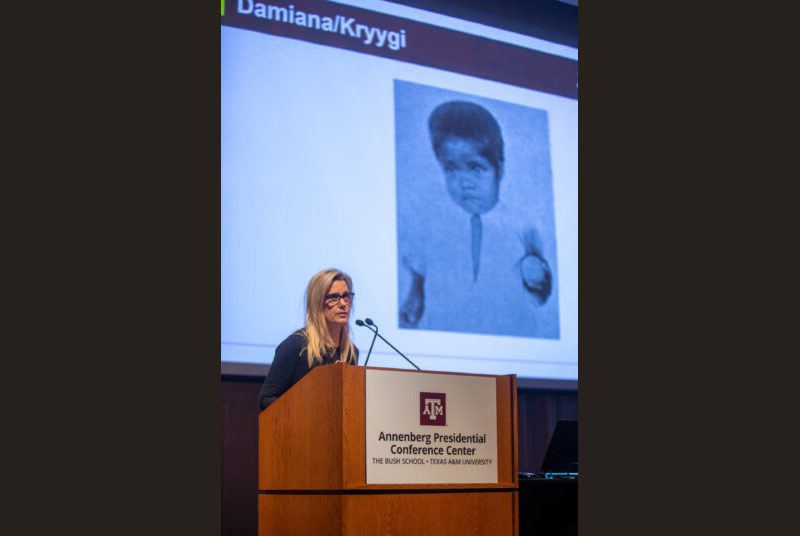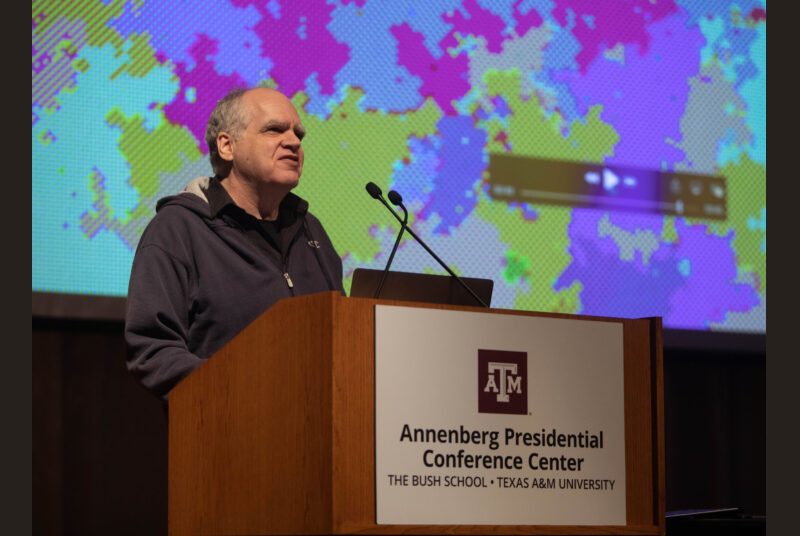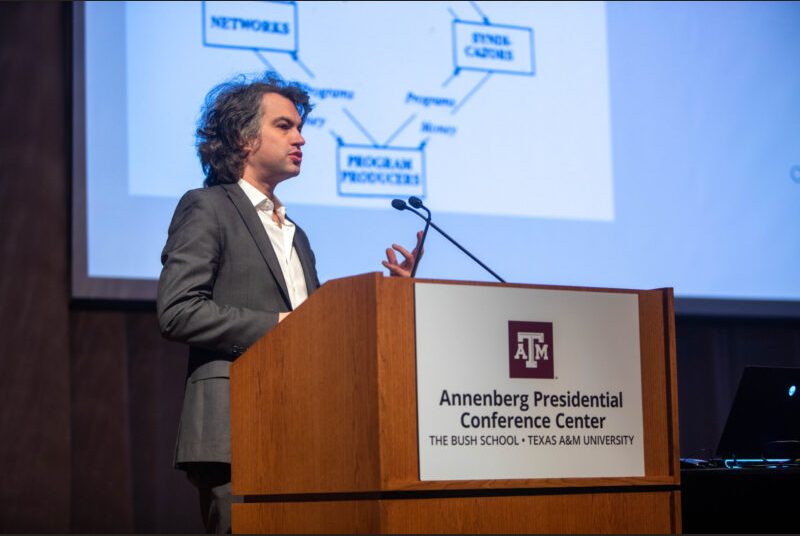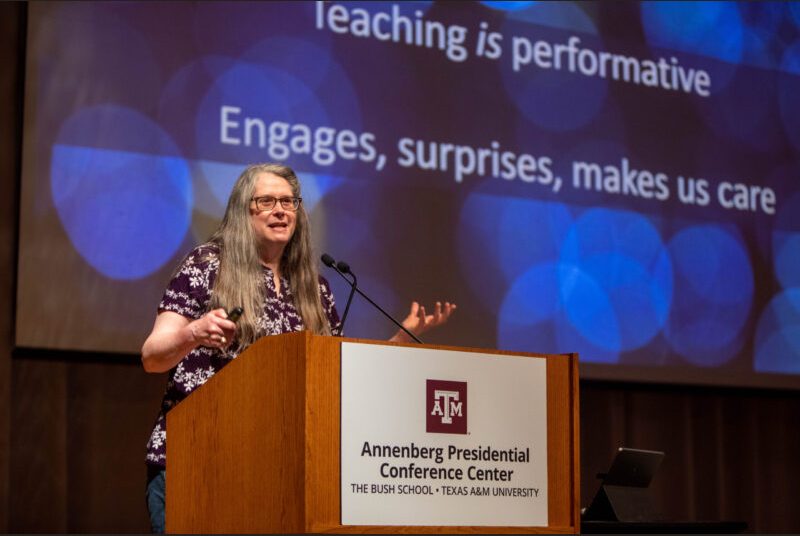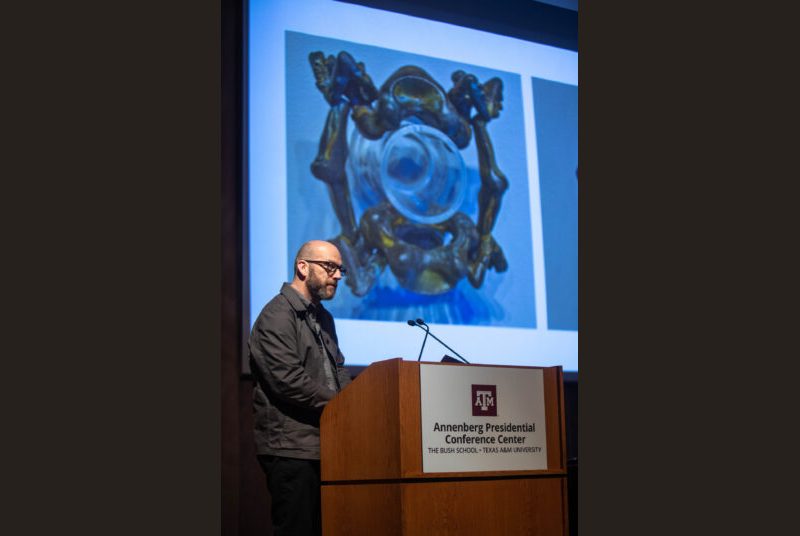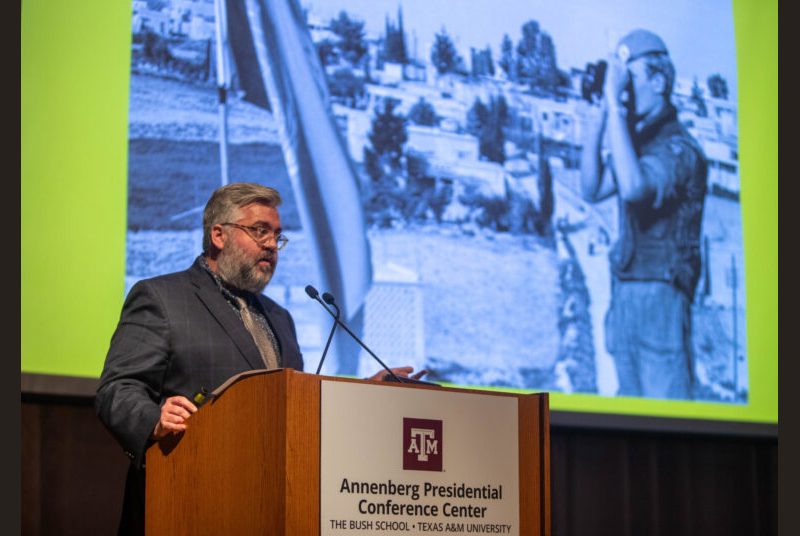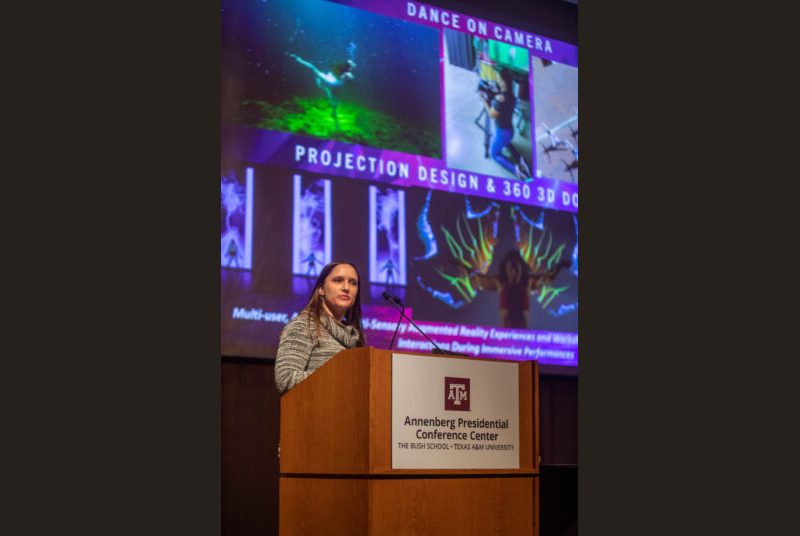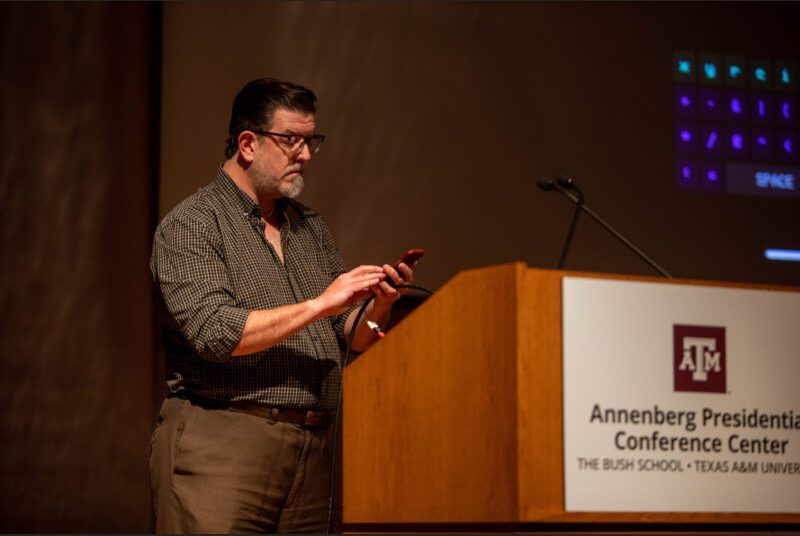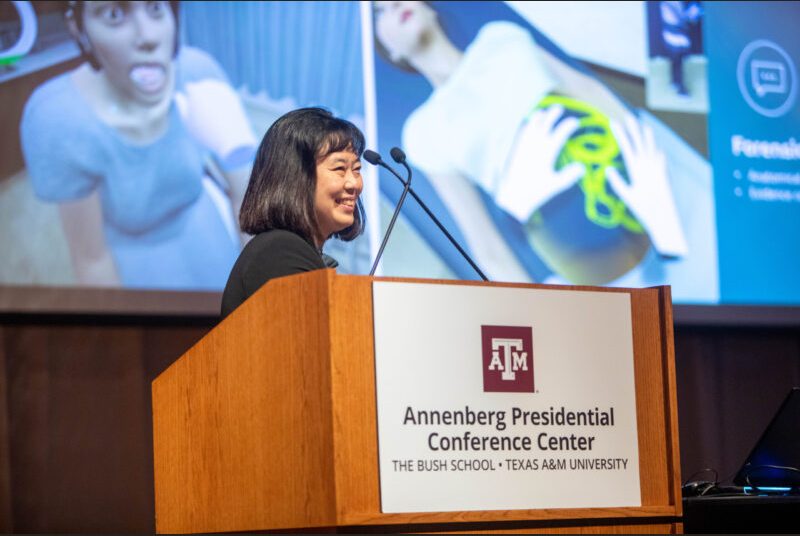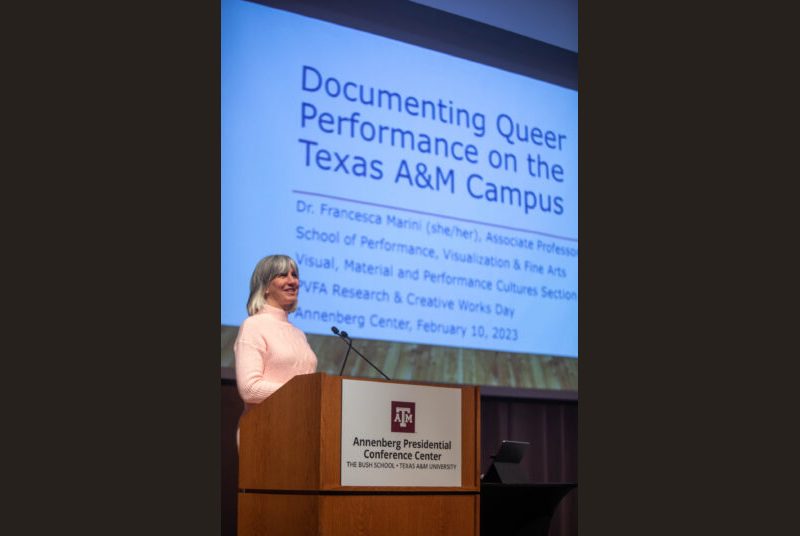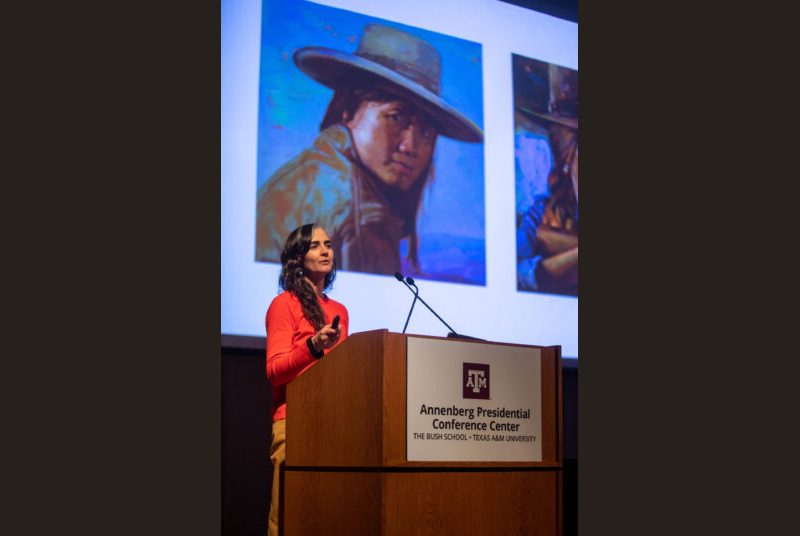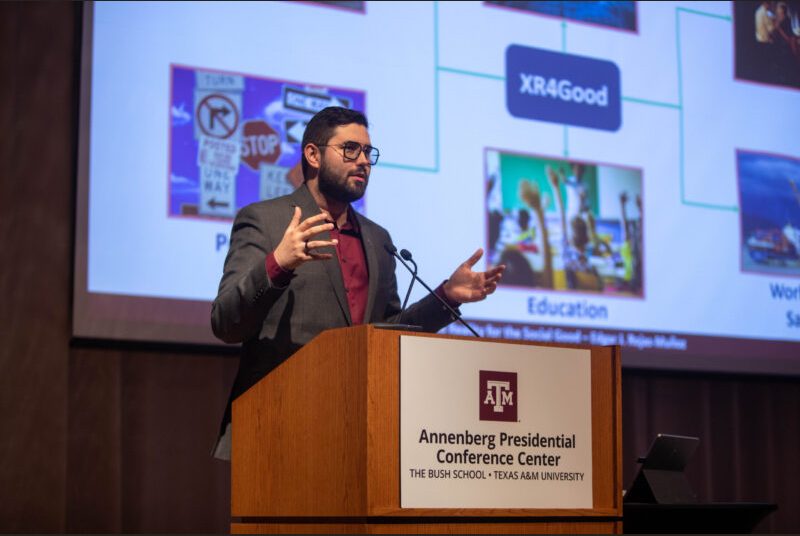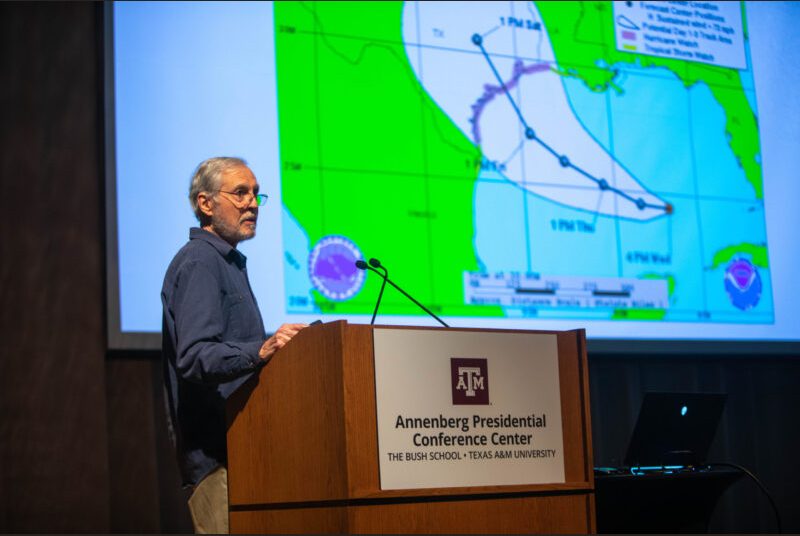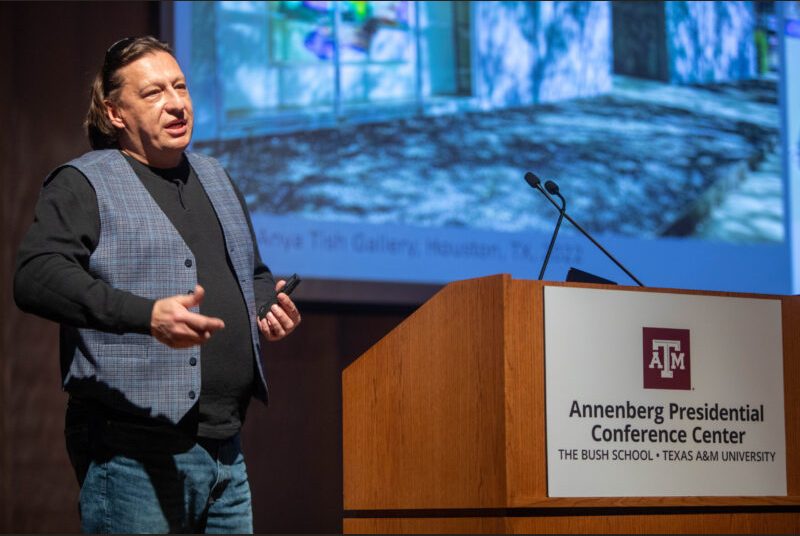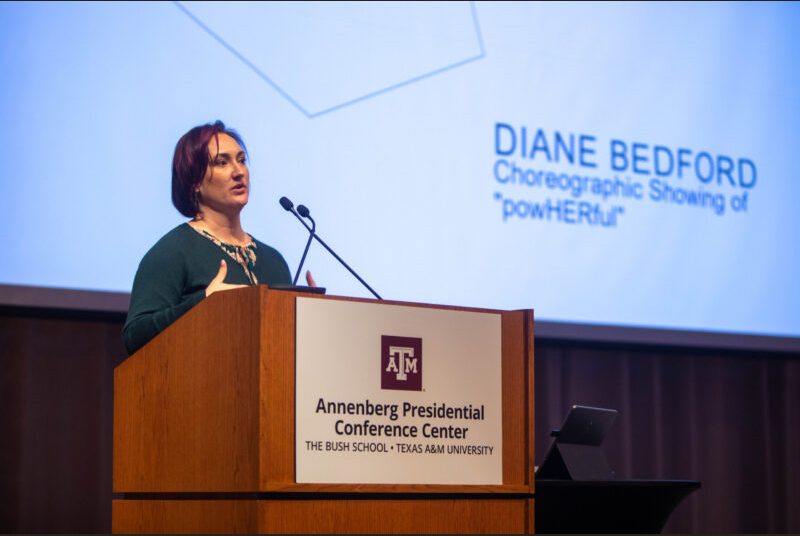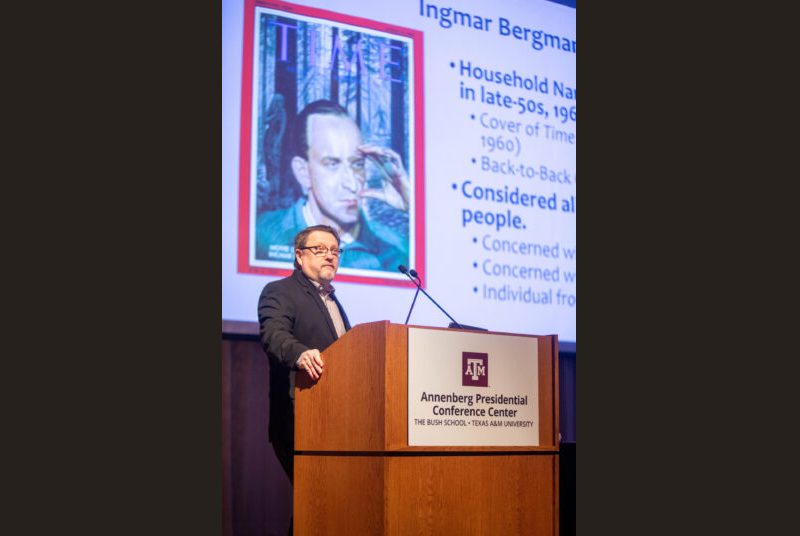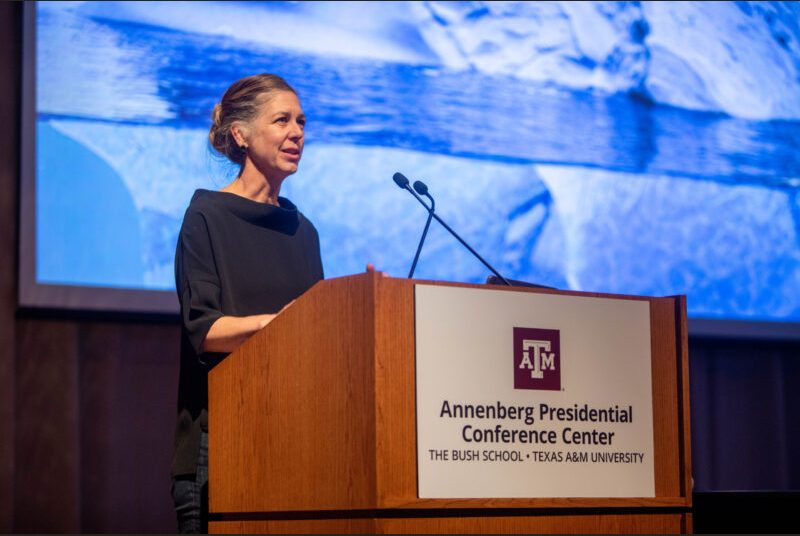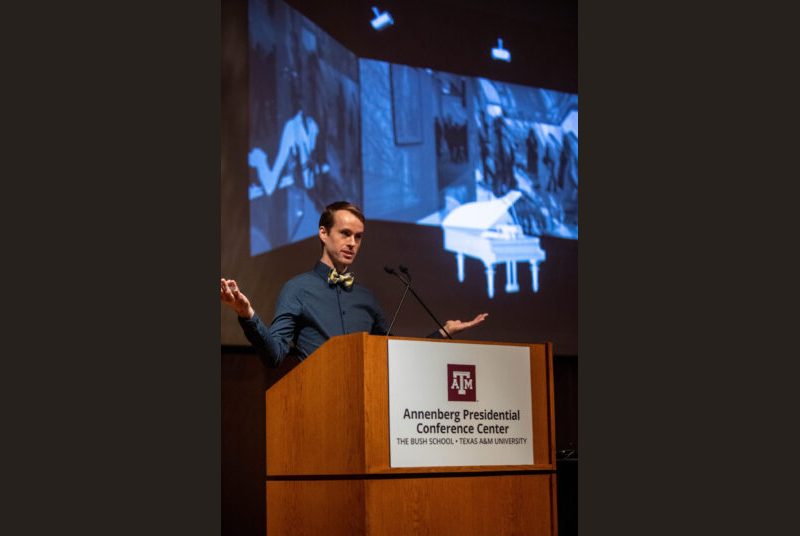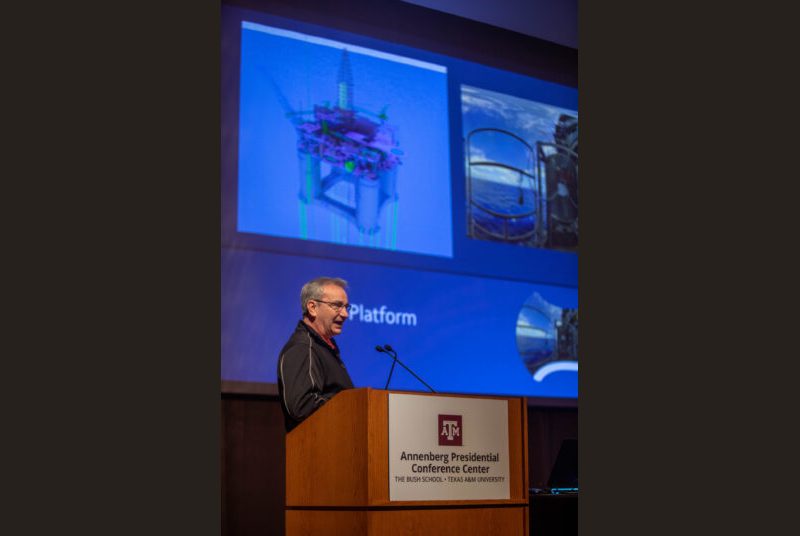Creativity Flows Through Art, Research At Inaugural Faculty Symposium
A vast array of artistic exploration took center stage Feb. 10 at the School of Performance, Visualization & Fine Arts’ Research & Creative Works Day.
The inaugural symposium at the Annenberg Presidential Conference Center showcased discussions of the arts, science and technology through three guest speakers and dozens of short presentations by school faculty. Ann McNamara, professor and associate dean for research and creative works, organized the day with the help of Stasha Kraguljac, executive assistant, and James R. Ball III, associate professor and assistant dean for industry and community engagement.
The wide range of topics included data visualization, immersive spectatorship in politics, digital choreography, sound effects in cartoons, AI-assisted 3D modeling and theater improvisation.
Interim Dean Tim McLaughlin defined the event as a deliberate establishment of what’s going on in the school and noted there is strength in the diversity of the work.
“This is how we take a moment to pause and recognize what we’re doing,” he said. “It’s for us to describe what we are doing individually, to see what we’re doing collectively, and be able, at some point in the future, to say, ‘Wow, I think I want to go work with this person.’ Or when you’re in conversation with another colleague on campus or off about an idea you can say, ‘I know someone from my school who does something that you might be interested in.’
“As a new school, we want to come back to this day year by year to see how we’ve grown and changed. And I can’t wait to see what this day looks like five years from now.”
Faculty Presentations
Christine Bergeron, clinical professor and associate dean for academic affairs, and Carisa Armstrong, associate professor and dance program director, chronicled the history of “But Where There’s Hope There’s Life,” a dance project that examines the Holocaust and its historical impact. Bergeron and Armstrong spent years developing the nine-section concept, which premiered in November 2020 in Downtown Bryan.
“We wanted the audience to have an experience beyond just sitting in seats and watching a dance occur in front of them,” Bergeron said. “There are a lot of interactive pieces including the wearing of a representation of the Holocaust on their clothing, remembering a loved one who has passed and leaving a memory of them along the journey, and closing with an art project symbolizing hope. The audience is actually walking throughout the evening with a tour guide leading the way. They are not told where they’re going. Some of the spaces are small and cramped, and some of the spaces are open. This nomad type of performance is intentional and represents the blind faith and trust people had to have in one another.”
The project incorporated collaborations from Performance Studies and Visualization, along with outside experts.
“We felt that to address this extensive project we really needed a lot of expertise from other artists and historians,” Armstrong said. “We also have consultants who we addressed content material with and had them come into the rehearsal process to see that we were representing in a very respectful way.”
The future of the project includes developing an educational app, augmented reality/virtual reality elements and a film to be used in public education, Armstrong said. It will also be performed at the Asheville Fringe Arts Festival in North Carolina in March.
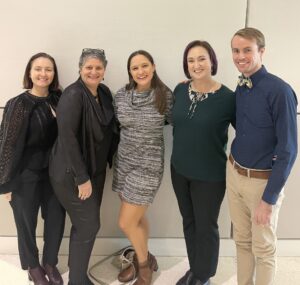
Bergeron and Armstrong later discussed how conditioning programs are handled among high school dance teams in Texas, noting that there is a lack of regulation to ensure safety, and that injury rates for these dancers are significantly higher than in other aesthetics sports like gymnastics.
Ben Howard, instructional assistant professor, detailed “Sandbox Dreams,” a collaborative installation involving piano, digital media and dance that incorporates two interactive sand stations. The piece will premiere in March at Contemporary Art Music Project’s international festival CAMPGround23 in Tampa, Florida.
“My research is in the realm of immersive theatre and dance,” Howard said. “Audience interaction is key to the experience of ‘Sandbox Dreams.’ We are inviting the audience to explore the space, how it can be altered and how each of us can have an impact on the performative experience of the work.”
Diane Bedford, clinical associate professor and section chair of dance science and performing arts, presented a clip of a performance titled “powHERful,” and Jennie Petuch, instructional assistant professor, shared examples of her work with digital choreography and augmented reality.
Music-related presentations included professor Jeffrey Morris’ live-coding improvisation titled “Tell the B335,” in which he programmed a performance through his phone. Lecturer Cory LaFevers examined how people adapt their bodies to play instruments, and race within the Brazilian music scene in Austin.
Ball discussed his research in immersive spectatorship as political action. His work in this area includes his 2020 book, “Theater of State: A Dramaturgy of the United Nations,” and his new edited collection “Performing Statecraft: The Postdiplomatic Theatre of Sovereigns, Citizens, and States.”
Susanneh Bieber, assistant professor, and Rayna Dexter, instructional associate professor, explored pneumatics in performance and how inflatable material has evolved, from function (tires) to fashion (Harikrishnan’s inflatable pants) to transportation (airships) to pop culture (Andy Warhol’s “Silver Clouds,” Woody Allen’s hydrovac suit in “Sleeper” and those silly T-Rex costumes). Dexter earned a big round of applause for a quick demonstration inflating connected plastic grocery bags with a hair dryer.
Zaps, boinks, gallops and crashes highlighted Patrick Sullivan’s presentation about television sounds in the network era. The lecturer incorporated these sound effects used in Hanna-Barbera cartoons and said that the studio built a library of sound effects that it would use across its television cartoons for more than three decades.
“They enlivened the limited animation,” Sullivan said of the effects. “So when Hanna and Barbera shifted to television, they had to strip away their full animation and go to what people might call jerky or stilted movement. And the sound effects would sort of fill in the movements sonically.”
Visual art creations were explored by several faculty members, including senior lecturer Dmitiri Koustov’s recent metal, oil on canvas and mixed media works. Felice House, associate professor and section chair for art and design, shared recent landscapes and her “Re-Western” series that recast contemporary women in male hero roles in Western films.
Laboratories tied to the Visualization program were highlighted, including the Learning Interactive Visualization Experience (LIVE) Lab, directed by André Thomas, associate professor of practice. Students create educational video games through interdisciplinary collaboration within the university and with other schools, along with reality capture projects.
McNamara detailed the scope of the Visceral Intersensory Visualization & Information Design (VIVID) Lab, which was established under the Texas A&M Institute of Data Science (TAMIDS). The collaborative group’s pilot projects include Courtney Starrett turning ice climate data into 3D form, which the associate professor discussed later in the day, and a collaboration with aerospace engineering students in designing and building a flight simulator.
Jinsil Hwaryoung Seo, associate professor and section chair of technical arts and interactive media, explained the history of Soft Interaction Lab, the research group she founded 11 years ago. The lab focuses on developing interactive art and design to augment human experience and exploring physical and virtual environments. This includes augmented and virtual reality in medical nursing education and interactive design for social good, she said. Connecting back to the school’s dance program, Seo discussed performance technology and motion capture, including developing interactive dance costumes.
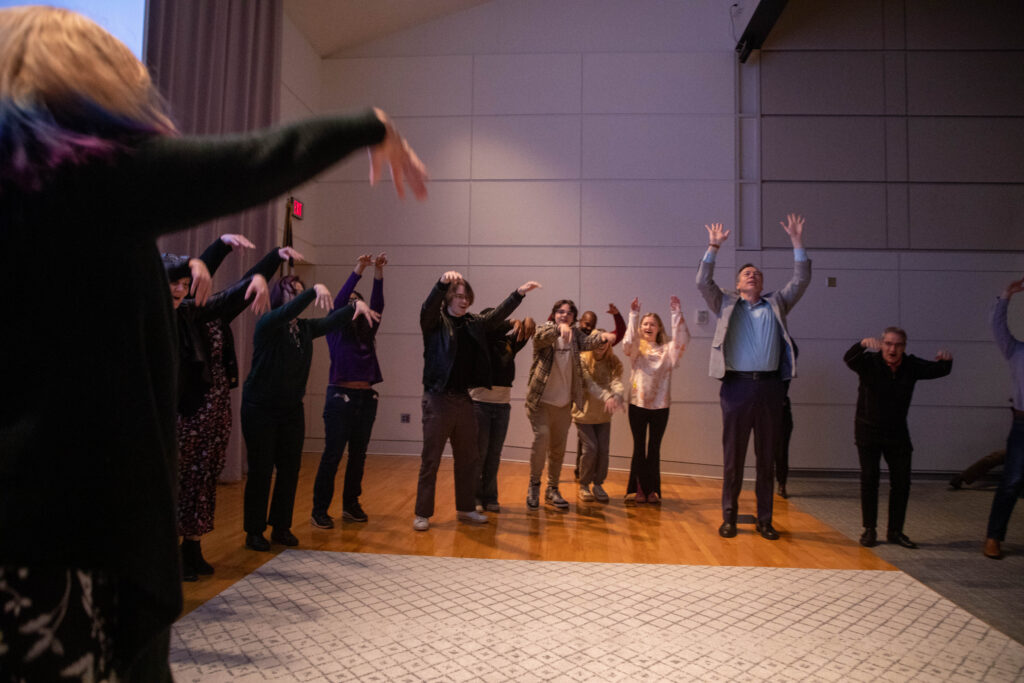
Laughter filled the auditorium with two entertaining sequences by lecturer Anne Quackenbush, who led the audience in an improvisation exercise, and a name game for dance and theater. Quackenbush also shared the benefits of improv in the work she and fellow lecturer Michelle Simms have done with Aggie ACHIEVE.
“One of the things I love about improv is that it forces you to concentrate, to listen, to focus on your partner in a way that nothing else does,” Quackenbush said. “When you’re trying to remember what to do, you can’t worry about something else. You can’t sit there and think, ‘What am I going to do later today?’ It keeps you focused.”
Guests Explore Art, Virtual Reality
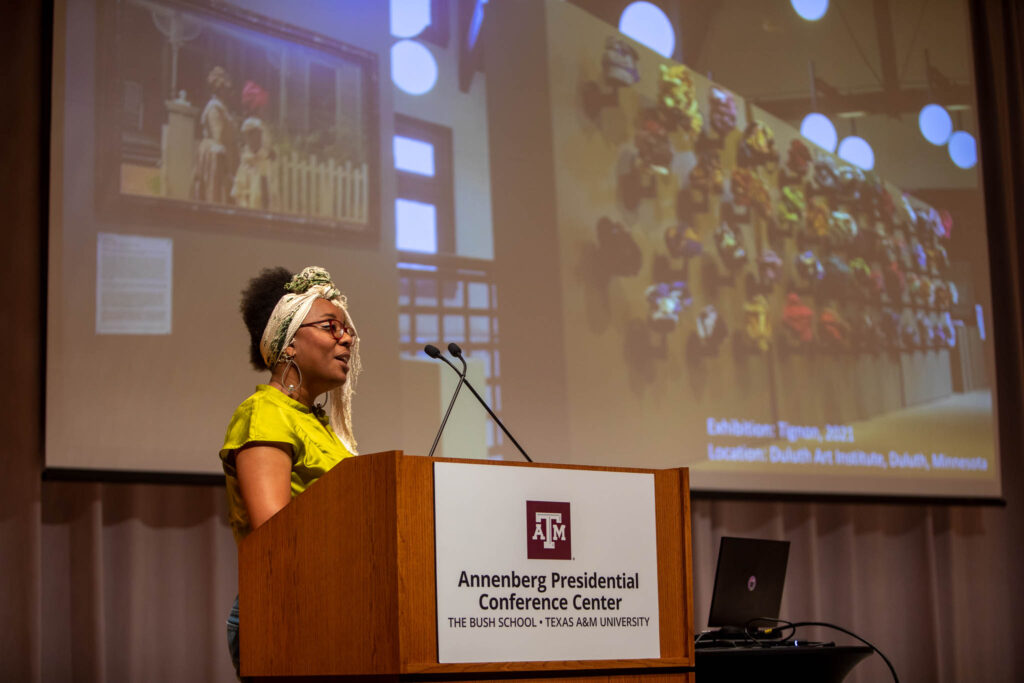
Texas artist Chesley Antoinette delivered the first keynote address, explaining how she developed her exhibit “Tignon,” which is on display at Wright Gallery. The exhibit is centered around a 1786 law in Louisiana that forced free women of color to wear headwraps to cover their hair. These women in turn created elaborate and creative headwraps with feathers and jewels as a rebellious response to the edict. The exhibit features headwraps, essays and photography that reference 18th century paintings and drawings.
The presentation included a detailed look at the competition among the superpowers — Great Britain, France and Spain — for land in North America, and how French and Spanish influences developed in the area prior to the Louisiana Purchase.
“As an artist, I’m interested in fashion and narratives related to historical events,” Antoinette said. “And when it comes to making art, it tends to be a bit personal. So my relationship to the headwrap is aesthetics, as well as through the making of art. I see fashion as sculpture. When I began this journey in researching, I was researching narratives surrounding the headwrap after wearing them and having a relationship with them for over a decade. I became interested in knowing the symbolisms attached, various cultures that have a relationship with the headwrap. That led me to the Louisiana territory.”
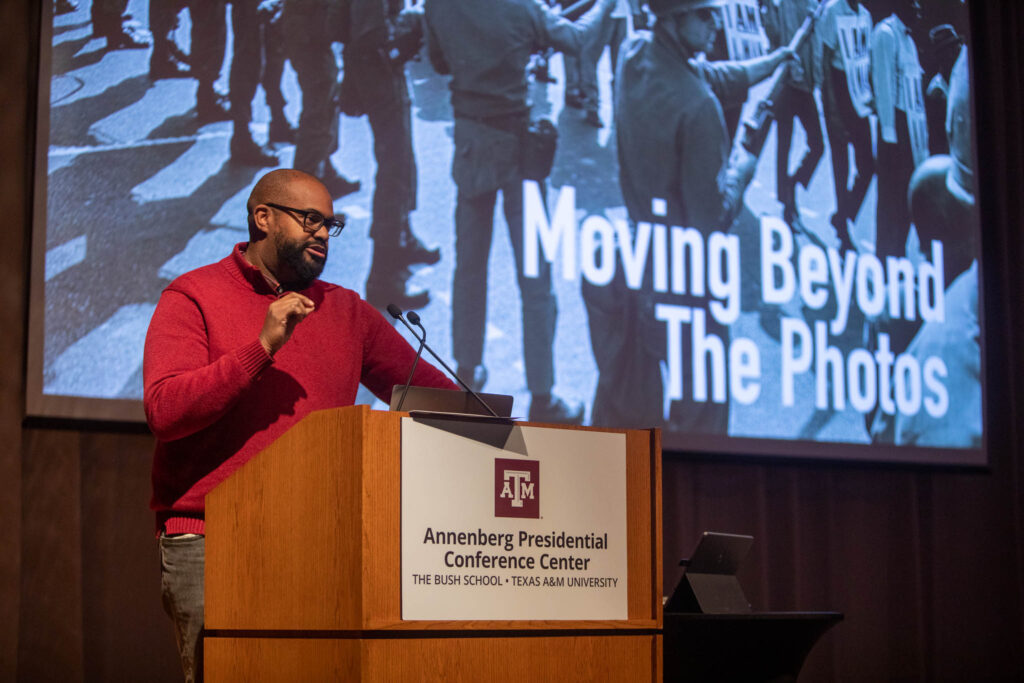
Derek Ham, department head and associate professor of media arts, design and technology at North Carolina State University, discussed virtual reality and how it can make an impact through community engagement. Ham explored the creation of his “I Am a Man” VR project, which examines racial strife amid the sanitation worker strike in Memphis in 1968 and the events surrounding the assassination of Martin Luther King Jr. at the Lorraine Motel.
Ham’s “Barnstormers: Determined to Win” project is an immersive experience that allows the user to learn the history of Negro League Baseball and play in a virtual game alongside such legendary players as Satchel Paige, Buck Leonard and Josh Gibson.
“What I have been struggling and working to do is, how can we allow virtual reality to give you some of the essence of the humanity of some of these moments in time,” Ham said. “To position you there. As some of my friends say, make you feel like you are breathing the same air. That’s where I think VR can be really transformative. When it really positions you there, and you, for that moment in time, feel as if you’re in these moments happening.”
A comment from philosopher and political activist Cornel West at a conference had a significant impact on Ham. As he recalled it: “If your research is not impactful for the man on the street, you have no business doing research. Make it count!”
Ham noted that when he took “I Am a Man” to the streets of Memphis for anyone to experience, participants opened up with their own memories or stories about the subject.
“VR has this ability to make us reflect and remember,” he said.
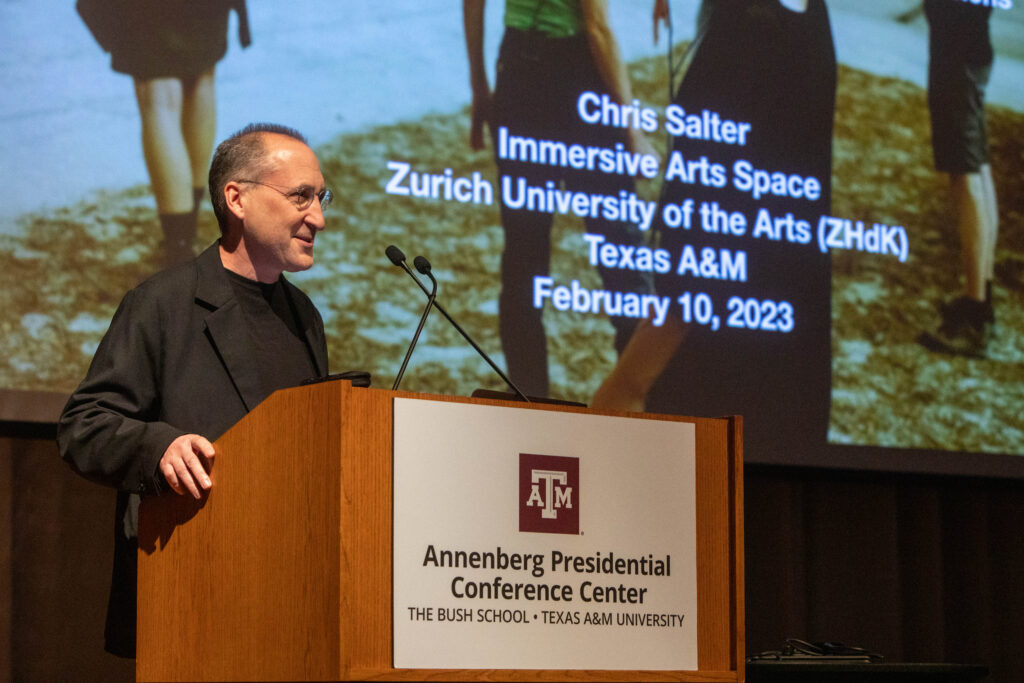
Chris Salter, director of the Immersive Arts Space at Zurich University of the Arts, examined the future of extended reality in the closing keynote address. He showed a series of videos of the roots of virtual reality, including a 1968 clip of the first headmounted display system by Ivan Sutherland, and a 2021 video featuring Meta’s Mark Zuckerberg touting how virtual socializing will be possible in the Metaverse.
A fourth clip came from “Animate,” a 2022 immersive theater project inspired by a short story. Salter served as artistic director for the project, which features two characters fleeing a climate crisis. The clip showed an industrial warehouse in Germany, where users in VR headsets experienced this escape. When encountering flying rocks, the audience members run even though they know they’re not there, he said.
“It moves between pure theater virtual reality, which is an old technology, and then augmented reality,” Salter said.
Salter said the clips “all in some ways involved different understandings of what we call XR, extended realities. Realities that aim to mix, merge and hybridize the virtual and the real.”
The Metaverse, Salter said, is portrayed as a new utopia. But the mixing of realities isn’t new, he said, referring to a 1965 article by Sutherland: “A display connected to a digital computer gives us a chance to gain familiarity with concepts not realizable in the physical world. It is a looking glass into a mathematical wonderland.”
‘Fascinating and delightful’
McNamara wrapped up the day with closing remarks, calling the content “inspiring and motivating and fascinating and delightful,” and encouraging connections and collaborations within the school.
“Here’s a couple of things I think we can do to keep the momentum from today going,” she said. “Reach out. If you saw something today that sparked your interest, or you just liked someone’s presentation, even if it has nothing to do with your research, reach out and go for a coffee. Maybe you’ll find something in common. Maybe you’ll find something that they have in common with someone that you know. Maybe you won’t see a connection immediately. But you won’t know unless you try.”
